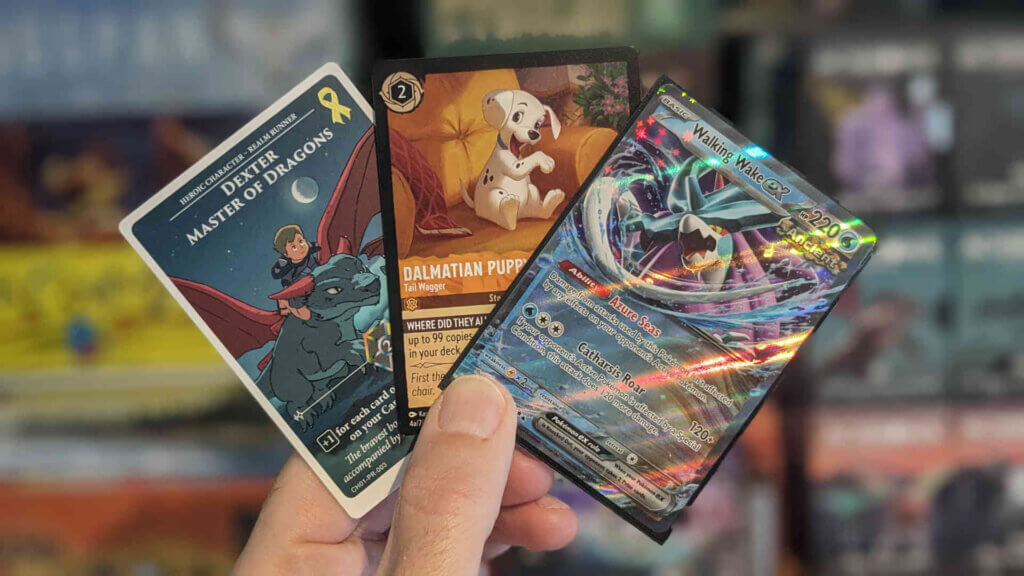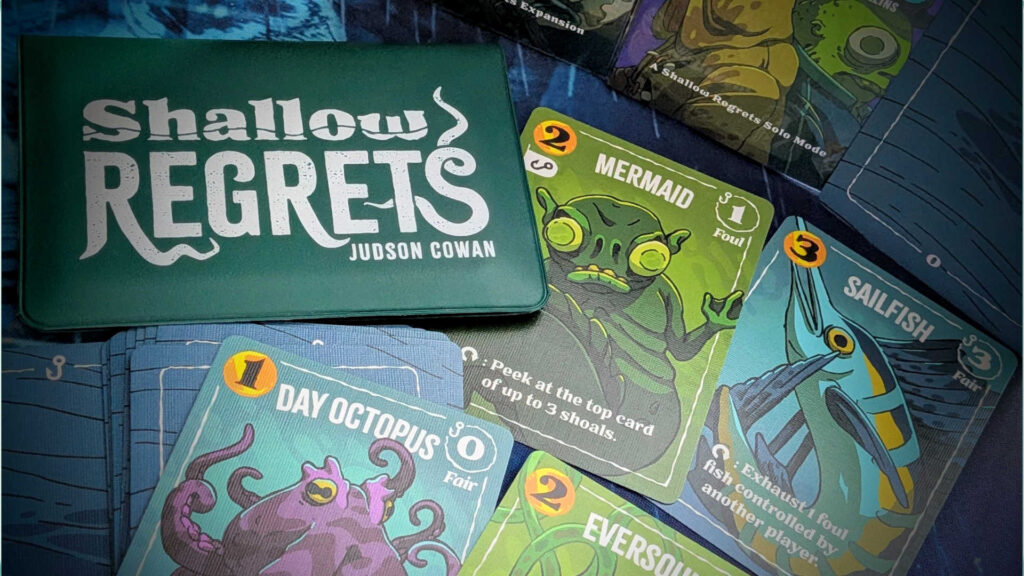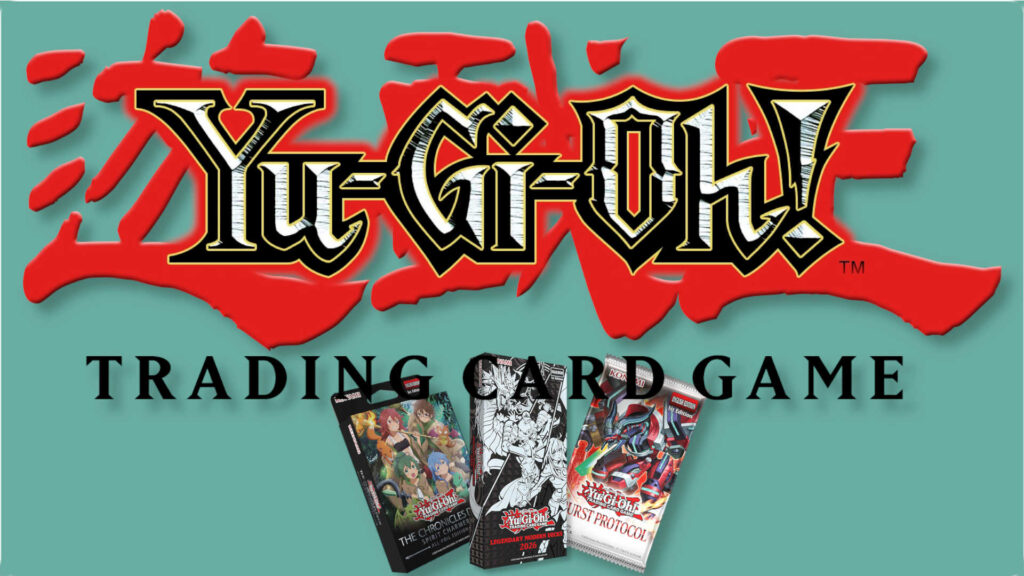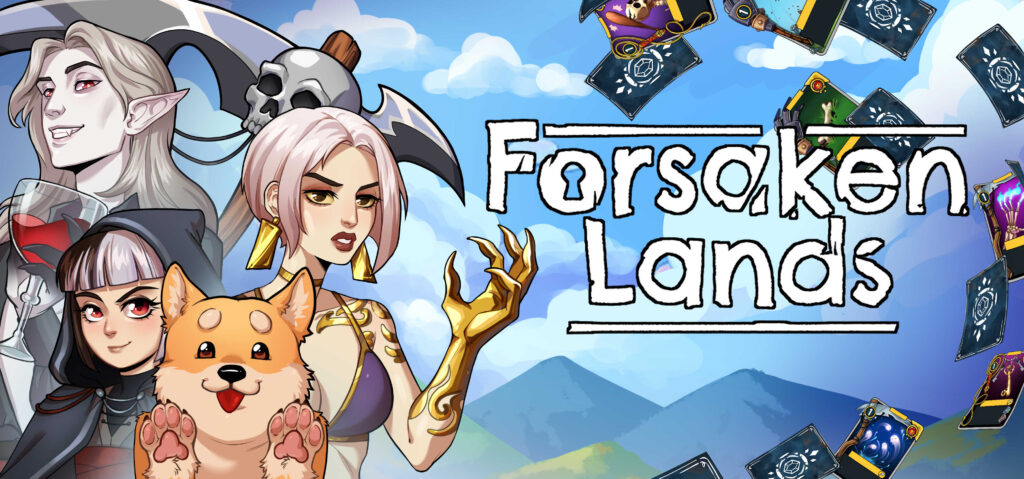Let’s grab ourselves a few decks – and find games that everyone in the family can enjoy – as we check out the best card games for kids!
Now I know this is going to make me sound even older than I actually am (which is pretty old, believe me), but tabletop gaming has come a very long way since I was a kid.
Back then, store shelves were heaving with both licensed and unlicensed games that were generally of the roll-and-move variety – and if that wasn’t the case, they were often built around gimmicky plastic gadgets that made most games exercises in dexterity rather than mental acuity.
Card games for kids tended to also be similarly unimaginative and undemanding; the still popular Top Trumps was omnipresent and it was rare to encounter a card game for kids that had any strategic depth or, heaven forbid, challenged kids in any way.
Thankfully – thanks to the rise of designer games in the mid to late 90s – over the last few decades, the situation has definitely improved.
So what games would we here at Card Gamer recommend for younger gamers?
Let’s find out, as we check out the best card games for kids!
Table of Contents
Toggle1. Pokemon TCG
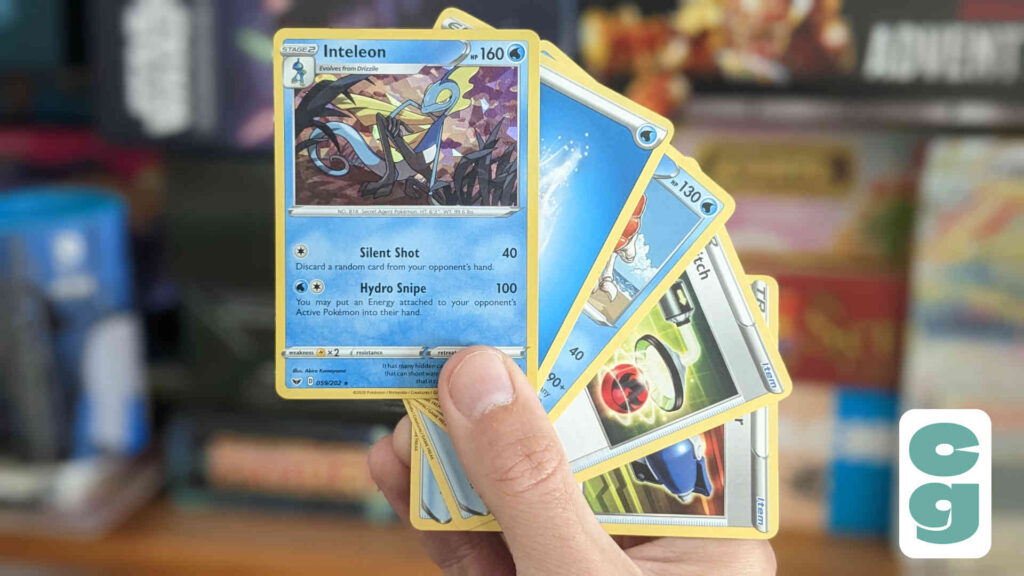
Though no doubt many parents will absolutely curse the inclusion of the Pokemon TCG as our number one choice for the best card games for kids (due to the potential cost involved in trying to catch ’em all) there’s no denying that it’s a superb game that your kids can grow up with – and continue playing as an adult too.
Though for many of us, the Pokemon Trading Card Game needs no introduction – but we’ll let you know what it’s all about, just in case the game has somehow passed you by in the quarter of a century since it launched!
Based on the Pokemon video games, the Pokemon TCG sees two players facing off against each other using decks of cards comprised of Pokemon (originally short for ‘pocket monsters’ in Japan), energy cards (used to ‘pay’ for Pokemon moves), item and supporter cards.
The aim of the game is to knock out a certain number of opposing Pokemon (usually six for a full game) or rid your opponent of all of their in-play Pokemon, whichever comes first.
This is done by attacking with your active Pokemon, which can often evolve into stronger forms by getting the appropriate evolved Pokemon form in play too.
Decks can be purchased pre-built to ensure a satisfying play experience for newcomers, but much of the fun in the Pokemon TCG – and with other TCGs and CCGs too – is in buying new cards and using them to build your own decks, with your own creatures, items and strategic focus.
There’s little more satisfying in any tabletop game than seeing a deck – which you’ve carefully put together yourself – absolutely crushing an opponent who’s done the same!
Though there’s a lot going on in Pokemon, it’s surprisingly easy to learn and it’s a wonderful way to bring players of different ages and ability together, especially as there are organised play groups pretty much everywhere.
Don’t tell the kids, but it’s also a really stealthy way to sneak reasonably large mathematical problems to them too!
2. Disney Lorcana

Coming in at a very close second in our card games for kids article is Disney Lorcana, which has given Pokemon some real competition since launching in 2023.
Disney Lorcana, published by Ravensburger, is the very first trading card game to feature Disney characters; just that fact alone should ensure its popularity among younger players, given that it’s also drawing from more recent films such as Moana and Encanto for its card art and characters.
So yes, Ravensburger could quite easily have slapped some lovely art on its Lorcana cards (which of course, they did!) and wrapped some rudimentary game mechanics around the visuals, and it probably still would have sold bucketloads.
Yet thankfully, that’s not the case with Lorcana, which is a genuinely excellent game for all ages.
In Disney Lorcana, you make a deck from two of the game’s Ink colours, with Ink being the game’s resource that’s used to play cards from your hand.
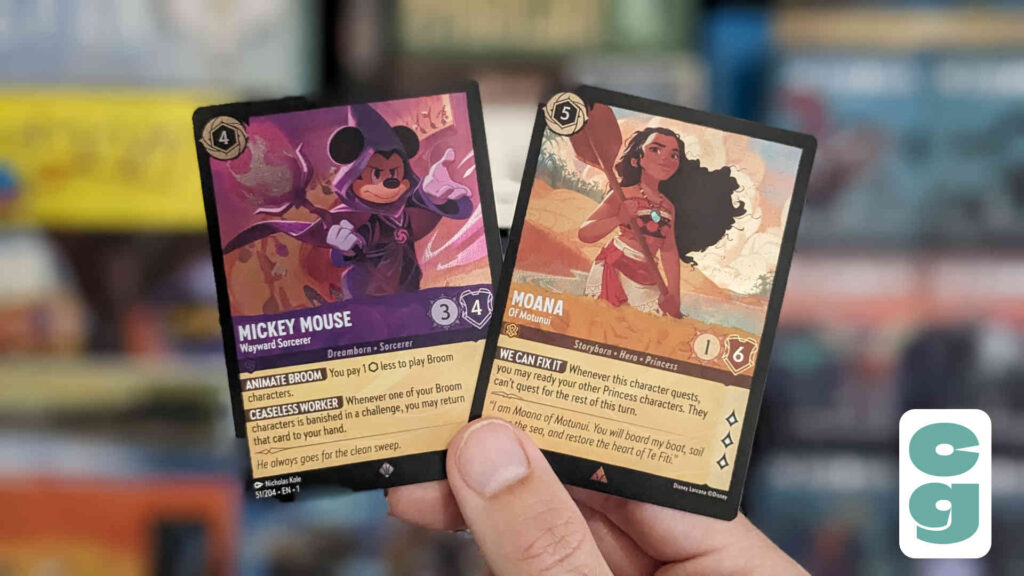
You then take turns playing characters (or ‘Glimmers’, as they’re known in-game) from your hand, using them to Challenge (or attack) your opponents and go on Quests to gather Lore, with the ultimate aim of the game being to accumulate 20 points of Lore.
It feels a bit like Magic: The Gathering, the original trading card game (or collectable card game, as it’s known, which is the same thing as a TCG!), albeit with Lore replacing the 20 points of Life that you need to drain your opponent of in Magic; Lorcana’s Lore gathering and combat between Glimmers is a much more family friendly approach.
It’s also much more simplified in the way the game works, making it much more accessible for kids; not to mention the art being suitable for younger players in a way that can’t always be assured with Magic: The Gathering!
3. Achroma: The Evolving Card Game – Dexter’s Dragon Riders
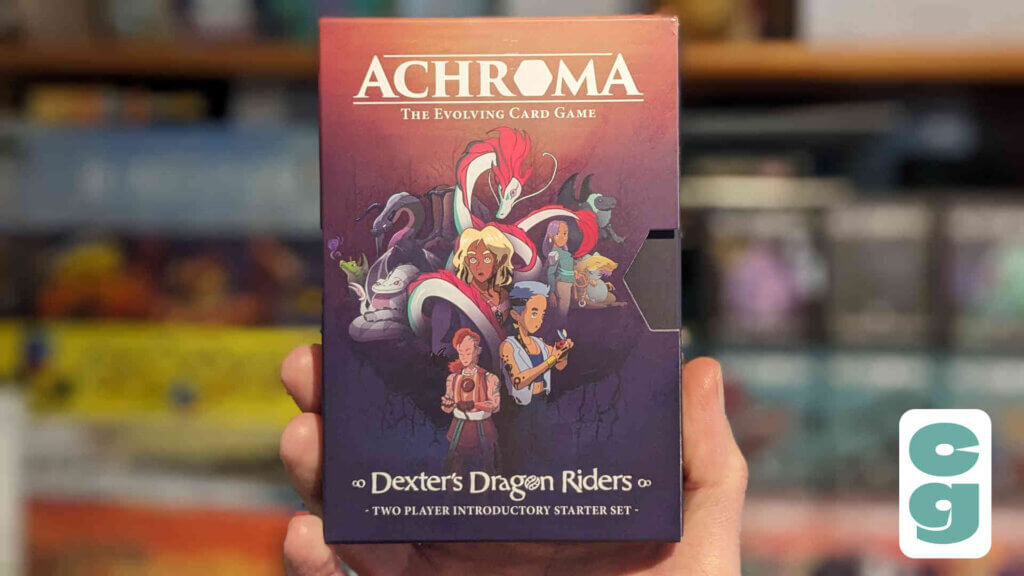
The Dexter’s Dragon Riders set is the perfect way in to Achroma for kids, but generally, any Achroma decks are easy enough for kids to play!
So, what is Achroma?
Well, it’s got some characteristics of a trading card game, like Pokemon or Lorcana, but instead, decks (known as Palettes in Achroma in-game terminology) are pre-constructed, and only randomly selected if you buy one of the Chronicle (which is an expansion series) 2 player sets.
For kids, however, Dexter’s Dragon Riders provides two perfectly balanced decks, built with simplicity in mind, that two players can use to learn, teach and enjoy the game for as long as they want before expanding their horizons with new cards.
In Achroma, players can win one of two ways: either by accruing ‘Shards’ (the game’s currency, life and victory points) for a Chroma victory, which is seen as the heroic way to win, or by draining your opponent’s Shards to zero, which is definitely the more villainous of the two options.
The two decks in Dexter’s Dragon Riders are each tuned towards either a Chroma or Achrom strategy, with the Dragons in one deck adept at gaining Chroma, and the Drakes in the other looking to drain Chroma.
What’s especially cool about Achroma as a game is the way that players can (though they don’t have to) use an app to track Shards, which can then add the Chroma or Achrom victory to global rankings.
This can determine the way that the story unfolds within the Five Realms that Achroma takes place in, giving all players (not just the youngest!) the feeling that they’re helping to shape the game’s universe every time they play!
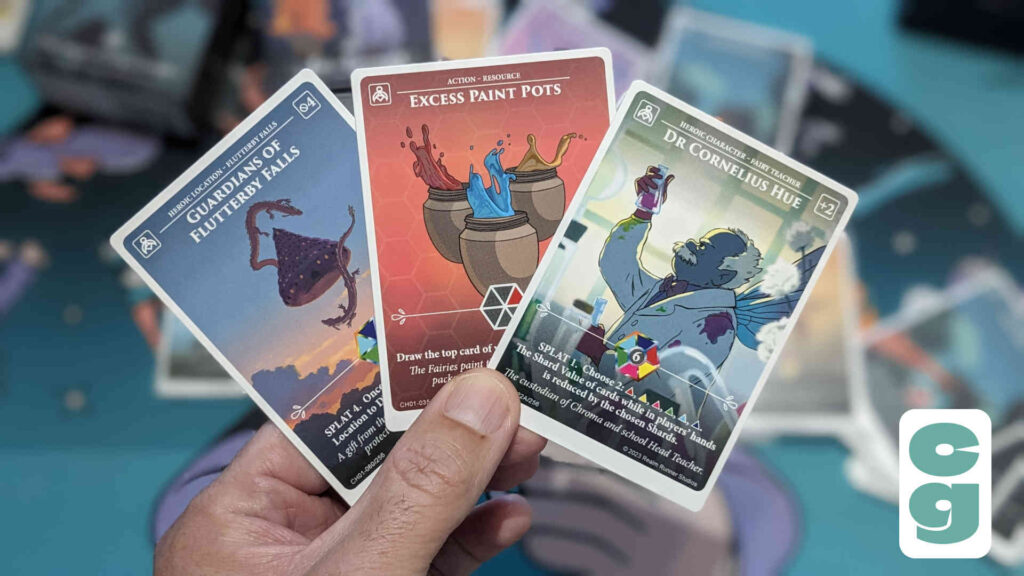
The cards have a clean, simple, colourful look and the anime-inspired artwork is phenomenal, giving the game a very Studio Ghibli or Breath of the Wild-style aesthetic that’s immediately attention grabbing for younger players.
The rules in Dexter’s Dragon Riders are presented in a way that makes the game very easy to learn and start playing immediately, with or without the app tracking your progress.
If that’s piqued your interest, you can check out our Achroma review for more details; note that not only is Achroma a fantastic game for kids, but as with most of the games on this list, gamers of just about any age will enjoy it too.
4. Happy City
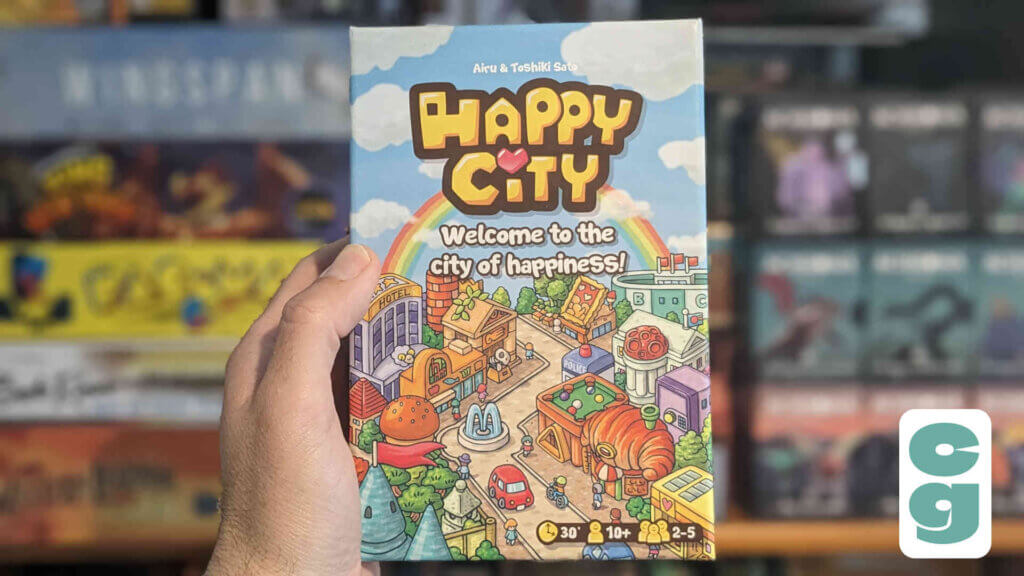
Not only is Happy City suitable for kids, but it was co-designed by a child too!
Happy City is a cute little card game in which players must build the city with the happiest citizens.
Cards in your city have hearts or citizens on them; the ultimate score of your city is based on the number of hearts you have, multiplied by the number of citizens on your cards.
There are two versions of the game in the box: Family and Expert.
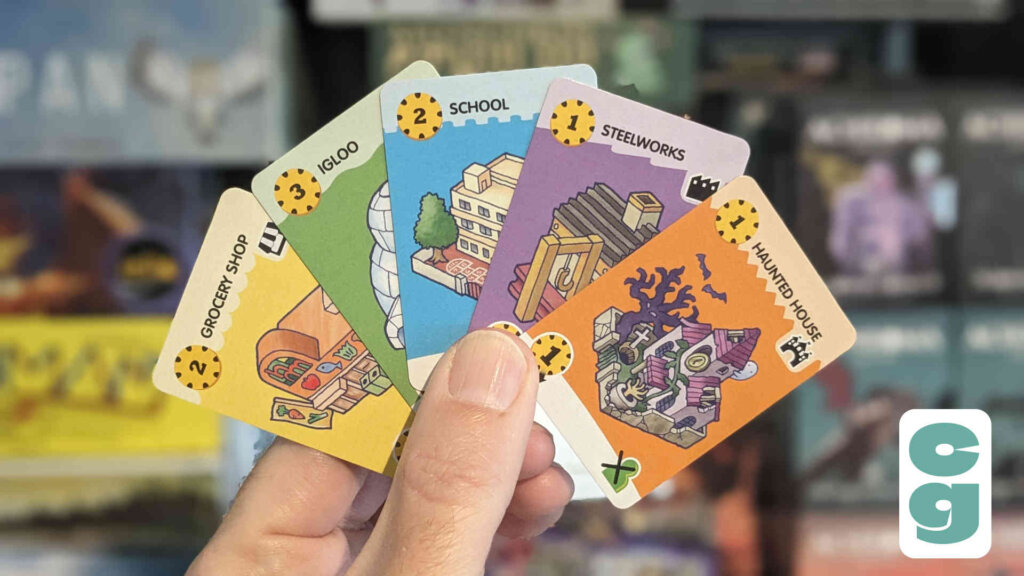
The Family version is ideal for younger players, with less conflict and less complicated effects or abilities than you’ll find on some cards used in the Expert version.
However, the Expert version itself is still very easy to learn and play, as long as your young ones don’t mind being the target of some card abilities!
It’s a wonderful game that’s really easy to pick up, very quick to play and, even though the box states 10+ as a recommended age, like all of the other games on this list, you’ll generally find that its appeal and simplicity makes it perfect for younger kids too.
5. Princess Princess Ever After – A Love Letter Game

Here at Card Gamer, we’re huge fans of the very minimalist card game, Love Letter.
In Love Letter, players have just one card in their hand; on their turn they draw another, then choose one of the two cards to play.
The aim of the game is to be the last player in the round, with each numbered card having a different effect, from allowing you to try and guess the number of the card in another player’s hand (eliminating them if you get it right), protecting yourself from other effects or even making a card’s value in your hand vital to your success.
What’s really interesting about Love Letter is that the entire game consists of just 20 or so cards; though it can be subject to luck of the draw, often there’s some very clever strategy involved in working out the probability of what cards players may have, from what cards are already in play.
Love Letter comes in all shapes and sizes, with lots of different themes; though the basic game is perfectly fine and is highly suitable for players of all ages, perhaps the one that’s most appealing for younger players is the Princess Princess Ever After version.
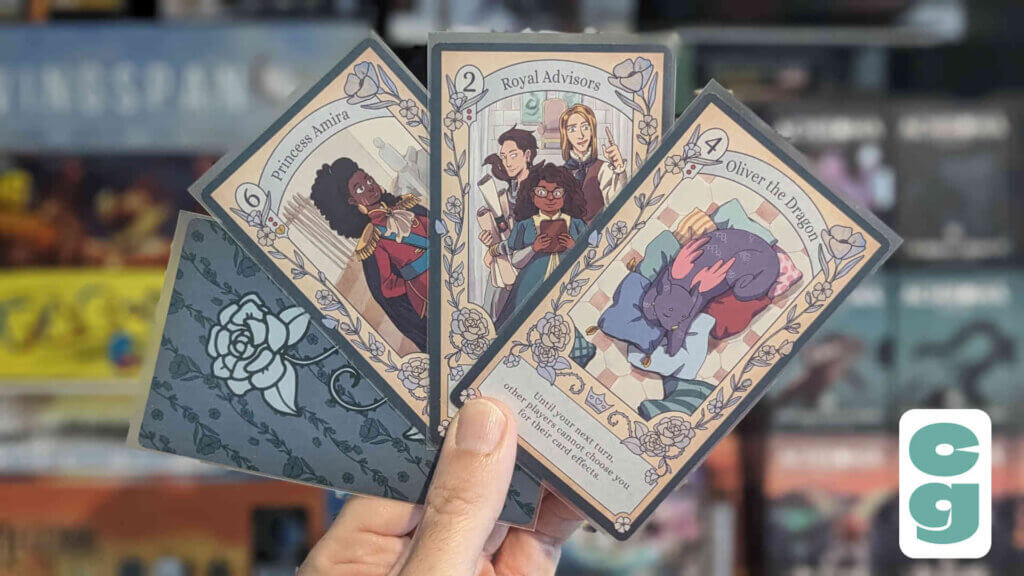
That’s because it features larger cards, with easier to read text and art that’s based on a children’s comic book (also called Princess Princess Ever After), which showcases the characters from that story too.
Other than the nicely sized cards and thematic art, Princess Princess Ever After plays exactly like the standard version of Love Letter (with one very minor difference in a point bonus on one of the card types), so if players have already learned the game with the more mature art style, or want to move onto it as they get older, it’s incredibly easy to do so!
6. Nessos
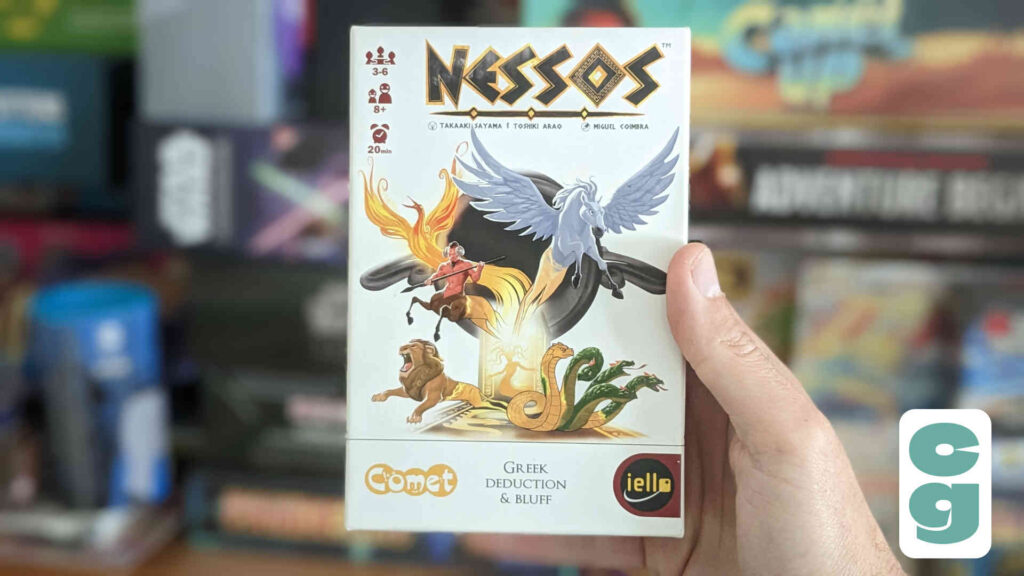
From secretly teaching your kids maths to basically teaching them how to lie effectively – here we are with the Greek mythology themed bluffing game, Nessos.
In Nessos, players aim to collect a certain number of points without collecting Charon cards; for those of you not up to speed with Greeky mythology, Charon is the ferryman who transports the souls of the dead to Hades.
Players have hands of numbered cards, with each numbered card featuring a nicely stylised depiction of a character from Greek mythology.
Depending on the number of players involved, there’s a different point value to reach in order to pave your way to victory.
Collect three face up Charon cards and you’re out; however, collect a certain number of points from your face up numbered cards before you get three Charons (or be the last player in the game when all others have been eliminated) and you win.
Simple, right?
The clever gameplay in Nessos doesn’t revolve around simply playing cards, however.
Instead, on your turn you must offer one of your cards face down to an opponent – telling them what number is on the card when you do. You must be honest about the number too!
Except if it’s a Charon you’re trying to get rid of – then you must bluff, as it isn’t a number at all.
The player can refuse the card; at which point it comes back to the active player who’s offering it, which can of course be dangerous if they were bluffing – as it’s immediately turned face up and added to their scoring pile.
Or they can take it for themselves, turning it face up and adding it to their own scoring pile.
Lastly, the player offered the card can instead take it (without looking at it), add a further card to it and offer it to a player not already involved in the offered cards so far.
Then they choose whether it goes to them or back to the new offering player!
With the quantity of each card value known and all scoring piles face up, the bluffing element of the game becomes crucial.
You can catch players in a lie if they say a Charon is a 6, for example, if all of the 6 cards are already face up and in piles – or if you have the last 6 in your hand, you have a crucial piece of information that lets you catch that lie as it happens!
It’s a very simple, very compelling game and, though it won’t really teach your kids much about Greek mythology – it’s a very abstract game of numbers and bluff; the theme is somewhat irrelevant – it does teach them to pay attention and focus.
From the description it may seem a little dry, but in action Nessos is a hilarious riot of bluff, counter-bluff and reverse psychology that kids of all ages can pick up and play pretty quickly.
7. Little Battle
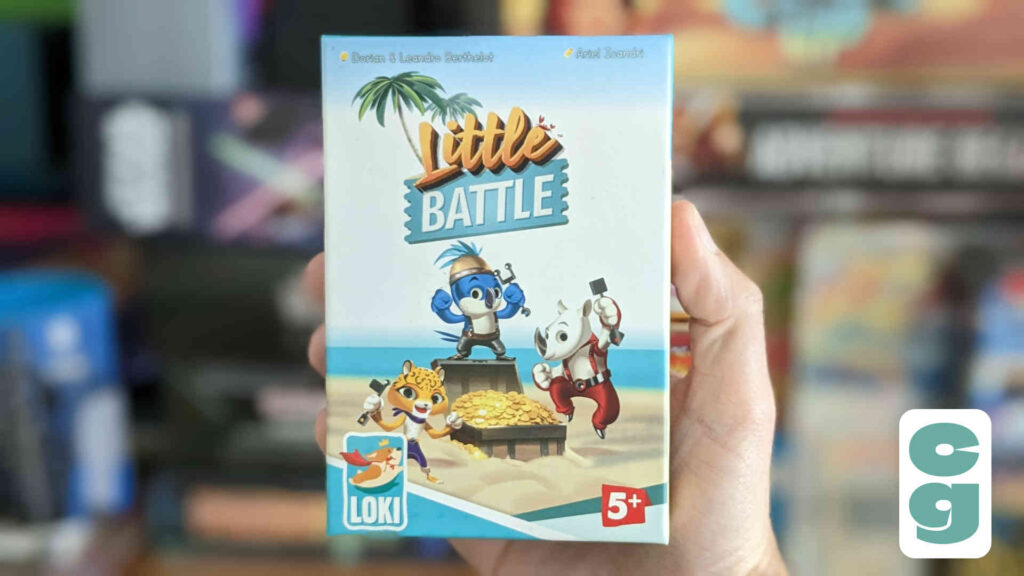
Just like Nessos, Little Battle is from publisher iello, though it’s released under their Loki imprint, which is a line specifically featuring games for younger players.
In Little Battle, players are animal pirates, in competition to open treasure chests on a beach.
Though aimed at kids specifically, Little Battle’s mechanics are initially quite hard to get your head around, even for parents!
That’s because the rules do a good job of explaining how to play the game, without first explaining why you’re doing it.
However, once players are underway and know what they’re doing in Little Battle, it becomes a very clever race to collect potentially ill-gotten – and very sandy – gains!
Little Battle’s card play is carried out in two phases: first, you’ll build your crew – and once you have your jolly, anthropomorphic hand of pirates, you can set about opening treasure chests.
The player who collects the most treasure wins the game.
Each player is initially dealt a hand of pirate cards, which each show an animal and a point value.
The tricky part of this is that players don’t actually keep these cards – instead, the first phase of the game involves picking and keeping one, then passing the rest of the cards to the next player while receiving a new hand of cards from a different player.

Players put together their crew this way – card drafting, as the mechanic is known in tabletop gaming – and then the second phase begins.
In the second phase, you’ll use your crew of pirates to open treasure chests, which are colour coded – and can only be opened by an animal matching the chest’s colour.
Players simultaneously play a card face down, next to one of the two chest cards currently on the table.
If they’re the only player to attempt to open a chest, they win it immediately.
However, if they’re competing with other players for the chest, each competing player turns over their card and the highest numbered card – if it’s the right colour – wins the chest.
Chests are kept face down and added to the player’s stash until everyone’s used all of their crew cards – then everyone turns their chests over to reveal their values.
Whoever has the highest number of coins wins the game!
It’s a really clever game that teaches forward planning and also – as with Nessos – a little bit of bluffing and risk taking too.
There’s even optional cards that can add a slight twist and extra powers to certain outcomes too, for when your little pirates want to up the complexity a little!
8. Machi Koro
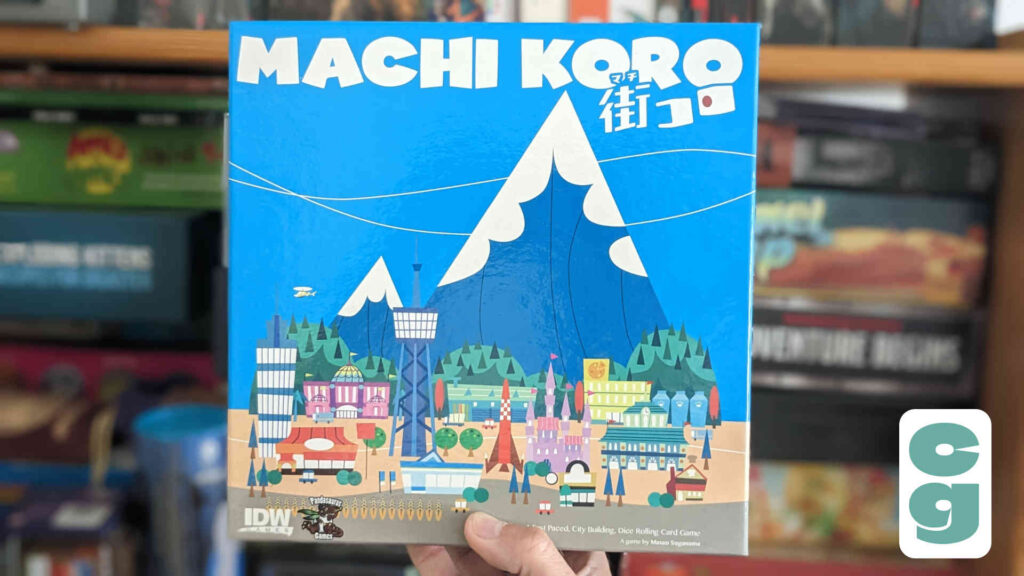
When The Settlers of Catan exploded in popularity upon release in 1995, one of the key factors in its success was the realisation, by players, that games existed where they didn’t just have to sit idly by while someone else took their turn – they could benefit and feel involved even when their opponent was playing.
Whether it was trading resources with other players or just benefitting from the roll of the dice to collect those resources, it made for a satisfying experience that the whole family could enjoy.
Of course, with Catan – as it’s now known, losing ‘The Settlers of’ part in recent years – being a board game, we couldn’t include it here.
So instead, we’ve opted for the superb Machi Koro – a city building game that uses only cards (and a pair of dice) for its gameplay.
Though not specifically aimed at kids, the fast-paced gameplay in Machi Koro is so simple to pick up that it’s an ideal game for players of all ages.
Players start with identical town cards to each other and roll one of the two dice on their turn. If they roll a number that appears on one of their cards, they can use its effect – which, at the beginning, will often be just to earn them a coin.
The thing is, all players have cards which can earn them coins on another player’s turn too – so the roll of the dice isn’t just exciting on your own turn; it’s an involving event no matter whose turn it is!
Coins are used to purchase new cards from a central card market, which are then added to the player’s little city of cards.
Cards are colour coded – so blue cards earn coins on anyone’s turn, green cards produce only on your own turn, red allows you to take coins from the person who rolled (if they have enough coins to give you!) and purple cards have strong, varied effects.
The aim of the game is to be the first player to build one of each of the Landmark cards, which each have their own very powerful effects – but it takes time to build up enough coins to get these into your city!
Machi Koro is an incredibly addictive game that is always a hit with players of any age – and it’s absolutely one of the best card games for kids!
9. Hungry Monkey
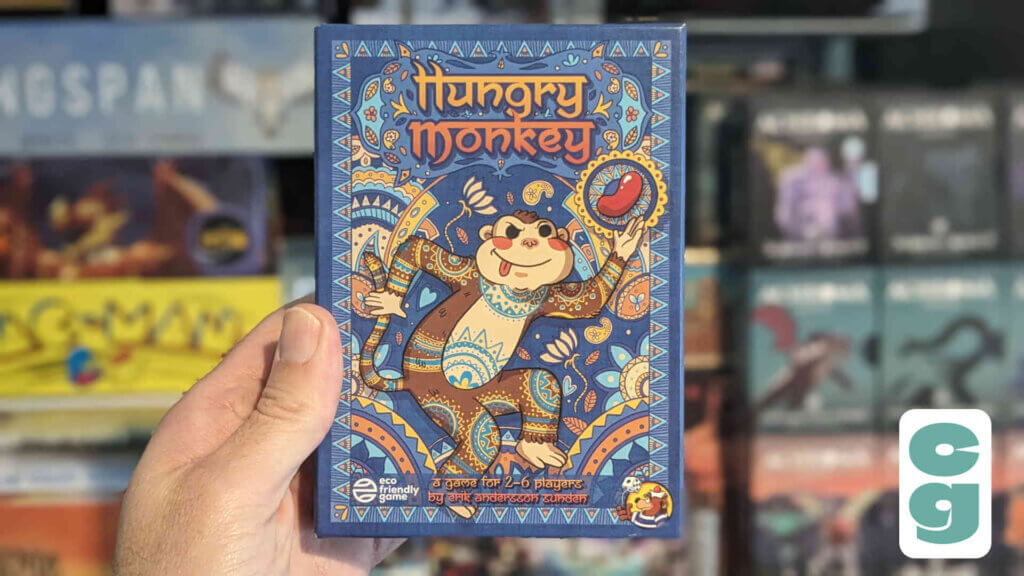
Let’s face it, which kid doesn’t like monkeys?
With cards and a story inspired by an Indian folk tales, Hungry Monkey is a game with a very appealing, child-friendly look and really straightforward gameplay too.
That said, the story of Hungry Monkey doesn’t really matter, given that the game is very abstract and based around attempting to play all of the numbered cards from your hand and the card row in front of you.
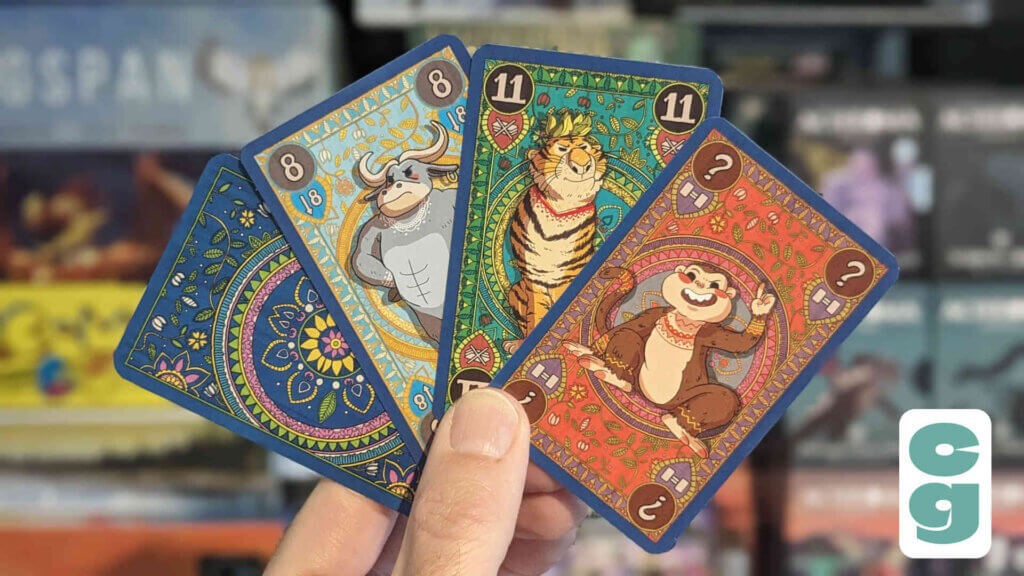
You need to play cards with the same or higher number as cards on the discard pile; you can trigger powerful effects with different animal cards too.
Getting rid of your hidden cards wins you beans, which you can use to keep track of scores if you play multiple rounds.
It’s really simple, easy to learn and very addictive; it’s a great introduction to more ‘grown up’ or complicated card games, especially with its distinctive and colourful artwork!
10. Dungeon Mayhem
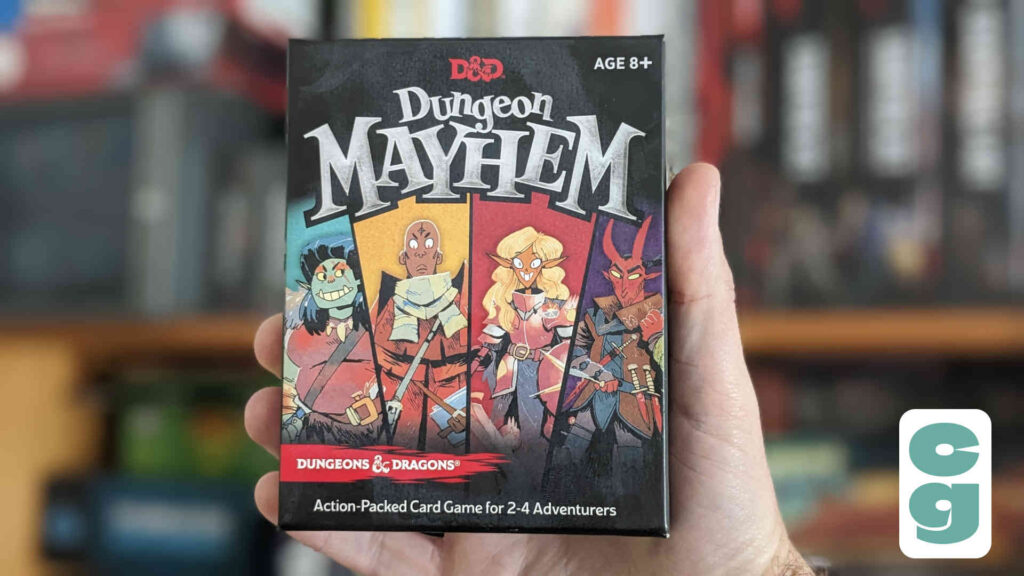
It’s arguably never been a better time to be involved in Dungeons and Dragons; the fifth edition of the world’s most popular tabletop role playing game (or TTRPG) is absolutely huge and has arguably never been as popular.
It’s not a card game though, so why are we talking about Dungeons and Dragons?
Well, that’s because Dungeon Mayhem is a light-hearted, easy to play and family friendly card game that’s set in the world of Dungeons and Dragons.
In Dungeon Mayhem, players choose a deck of cards from the four on offer in the base game.
Each deck represents a particular character class that’ll be familiar to anyone with a passing interest in Dungeons and Dragons or even just the fantasy genre in general: Barbarian, Paladin, Rogue or Wizard.
It’s a very simple game, with the aim being to be the last player standing.
On each turn, players draw a card from their deck, then play a card from their hand – with each card having one or more symbols on it.
Symbols are used when the card is played; in most cases, these will be symbols such as swords or shields, but can instead trigger character-specific powers.
Swords are played and attack a specific player’s health – two sword symbols reduces a player’s health by two, for example.
Shields are played in front of a character and will protect them from a certain number of swords – for example, three shields will protect against three swords, though once the card’s shields have all been used, the card is discarded and the character’s health can once more be attacked directly.
Though not a difficult game to learn by any means, each player is also issued with a reference card – so Dungeon Mayhem is very easy to learn and play, pretty much immediately, even by the youngest of players.
Kids should find the cartoony aesthetic and lightning fast, comically aggressive nature of Dungeon Mayhem entertaining and appealing; though players are eliminated from the game as their health reaches zero, games move so quickly that they won’t be out of the fun for long.
As games of Dungeon Mayhem are so fast-paced and short, it’s also easy enough to play multiple rounds.
So there we have it – five games that we feel are the best card games for kids – though of course, older players are sure to have plenty of fun with these games too! If you’re looking for something to play with your partner, take a look at our best card games for couples article!


